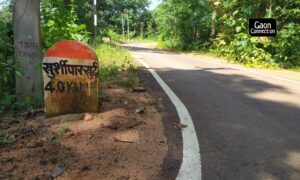The colourful kolam powders sit forlorn in a corner as streaks of red emulsion paint drip from the parapet wall, washed down by the rain before they could dry. There seems to be no end in sight for the unseasonal rain and there are two groups of people who are especially sad about it.
One that has chosen to paint their homes now, and the other who was planning to prepare for beautiful Pongal rituals such as creating the beautiful colour kolam, or as it is called in the north, the rangoli. I am a member of both groups, having decided to paint my home and celebrate pongal with my kolam.
As a child, I remember the occasions that merited the special colour kolam — Deepavali and Pongal, and, of course, New Year, when we would write Happy New Year on January 1 with all possible colours.
For Pongal and Deepavali, we would practise our dots and lines so that when we bent down and allowed the white powder to trickle through our fingers, it obeyed our command — a straight line here or a curve there. My mother and grandmother insisted we never squat while drawing the outline — your lines will be disobedient, they would say.
For Deepavali, predictably, we would draw lamps, both in the disciplined pulli (dotted) kolam and carefree freehand kolam that relied only on our ability to imagine, while sticking to the basic grammar of a kolam.
For Pongal, it was always a pot in the centre of the kolam and a sugarcane on either side. The colour purple was in great demand. We had to colour two overgrown plump sugarcanes, you see! They were a deep purple with blackish brown roots. I’d realise now, years later, how far off the mark both the purple and black-brown were!
The more creative among us used to manage a 3D effect, of milk overflowing from the pongal panai (pot). A sleight of hand and some white kolam powder was all it took to create that impression. I once even drew an aduppu (chulha/stove) with glowing embers in orange and red.
Making the Pongal kolam is a community affair. At least it was till I left Coimbatore in the 90s. Young boys and girls and their mothers would prepare the ground with a sprinkling of watered-down cow dung. Once the smell went off leaving the ground semi-dry and a dull green, the white kolam powder — rice flour in the olden days, limestone powder now — would be brought out. This was the perfect time — the ground would still be wet to hold the powder, but not so wet that it would change its colour.
Depending on one’s dexterity and ability to wield the kolam powder, one could choose to draw a single line kolam or a double-line one.
By this time, children, supervised by one of the aunties in the neighbourhood, would be creating mounds of colour powder, mixing dark colour concentrate powder with the white kolam powder.
Once the basic outline was drawn, the neighbourhood aunty with the most colour sense would draw a small circle with various colours across the design so that the rest of us knew the colour scheme. She’d then move on to the next house, where the outline was already waiting.
We would begin in the evening at about five, and continue, ignoring the mosquitoes that feasted on us. The men would hold torches, and later emergency lights, when the power went off. By the time the last line was drawn, it would be close to midnight. By then, the street would be filled with row after row of colourful kolams.
The next morning, even though we knew exactly what we had done, we’d still admire our own handiwork, and compare notes with what the neighbour had drawn. The Pongal pot kolam would bubble in front of all yards and the sugarcanes would beckon invitingly. Happy Pongal or Pongal Nalvaazhthukkal would be written in Tamil, leaving no one in doubt about why such an elaborate kolam adorned the thresholds.
It’s 2021 and I’m home in Tamil Nadu for Pongal after a long, long time. I did check what colours we had and mentally prepared myself to draw a pot and pattern it with intricate designs, but Nature decided otherwise. The only colour on the ground today is of the red earth and the pouring rain!
Subha J Rao is an independent reporter and editor working out of Mangaluru, Karnataka. She writes on cinema and sustainability.



















